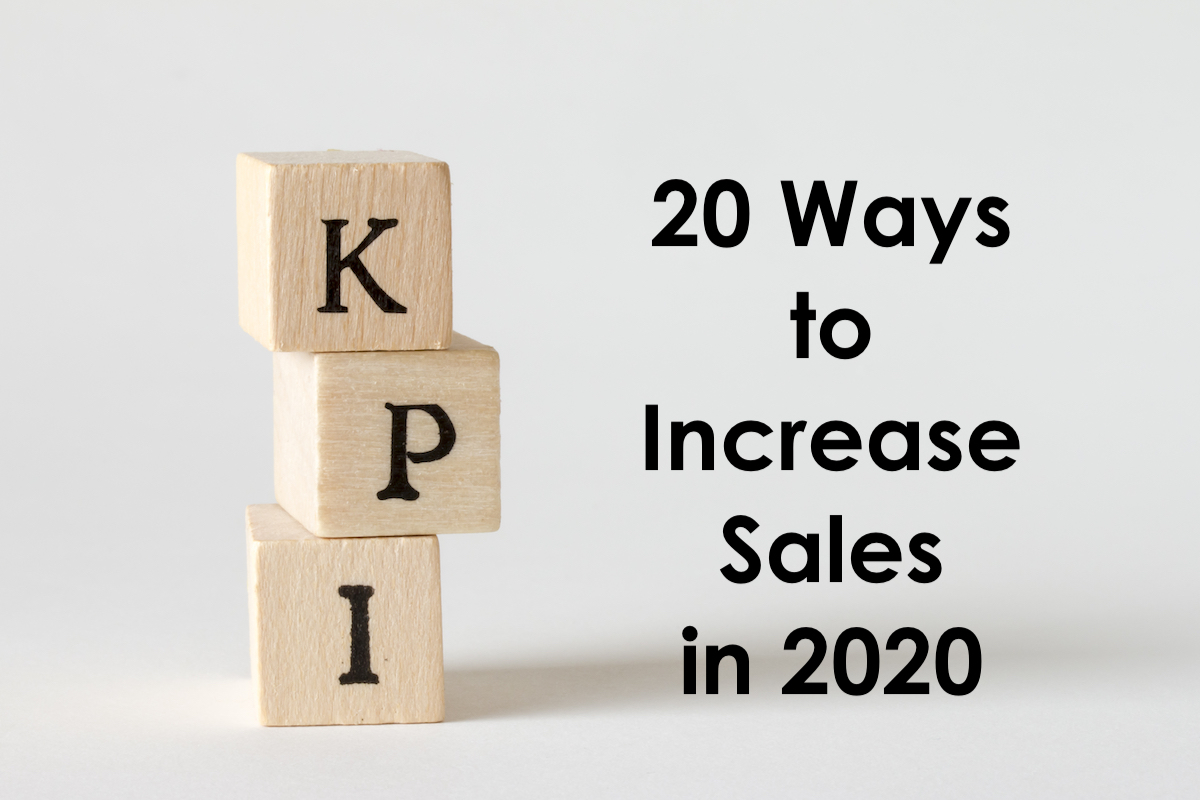
by Julie | Mar 26, 2020 | Leadership, Uncategorized
The past week was consumed with planning for either working remotely or adopting social distancing guidelines for businesses that remained open. But, this week has been a little different as the planning phase has been completed and now it is time to execute the plan. And, if you are like me, you have a little more unstructured time on your hands. So, the question is – how do we make the most of this time?
Last fall, after returning from a journey on the Camino Frances, I spent a lot of time learning how to be more intentional – with my time and my focus. Through this, I developed some great tools that I use every day, week and month to keep me focused on the right things. I think these tools are very helpful, especially as we face our current situation. At the bottom of this post are links to those articles.
If you want to skip through reading the posts and go right to execution, I have compiled all of them into a single presentation that I can review with your or your team. All you need to do is send me an email, or call me (360-975-8110) and we can get an on-line meeting scheduled.
We will get through this time! And we might as well make the most of it! It definitely beats binge watching Game of Thrones, baking cookies (I mean, where did all those flour hoarding bakers come from?) or playing drinking games every time someone on TV says COVID-19.
Stay healthy! Be Productive!
Goal Setting Process
Weekly Planning Process
Time Management Tips
Managing Emails

by Julie | Feb 20, 2020 | Uncategorized
Nearly all of my clients want to grow their revenues. This may be due to stagnant sales with their current customer base, new product introductions, or a real or perceived downturn in their target industry. But let’s be honest—can’t we all benefit from additional customers and sales?
So, to help all of you out, I compiled a list of action you can take right now to help grow your sales.
- Call your customers. Nothing beats a personal phone call.
- Personalize your offerings. Every customer has different needs and therefore may need a unique solution or personalized touch. You don’t have to create a whole new product, but you could customize it so it meets unique needs.
- Educate your buyers about all your products—but do it naturally, not as a one-sided presentation.
- Listen to what your customers are saying. Take the time to understand the meaning behind their words. You may need to ask some checking questions to confirm you understand.
- Offer solutions, even if the solution isn’t something you can sell them. A good salesperson is constantly focused on providing valuable information for their customers because they want them to succeed, not just to make the sale.
- Ask probing questions. Most salespeople get stuck in a rut when it comes to asking questions. How many different types of questions do you use? Have you tried the Best/Least, the Magic Wand, or the simple but extremely effective Tell Me More questions?
- Give them a referral. A warm referral is much stronger than a cold call. And if you know your customers and their offerings, you should easily be able to introduce them to someone who could use their product.
- Ask your current customers why they buy from you. Chances are, the answer may surprise you. Then use that information when communicating to your prospects.
- Be clear on your product benefits—but keep price out of the equation. You never want to sell on price alone.
- Don’t prematurely advocate. If you haven’t taken the time to develop trust and uncover the customer’s unique need, you will probably lose the sale. I like to tell my clients that “we are going to date for a while.” I want to make sure I understand my client’s needs before proposing a solution.
- Don’t make assumptions. It won’t serve you well, even if your assumption is correct.
- Communicate in the buyer’s language, not yours. Your customer doesn’t care about your internal processes—she cares about how it benefits her.
- Manage your time wisely. This is one area that very few people have mastered. (I developed a great process to help you master it—just ask me!)
- Ask for the sale. In order to make a sale, you must raise task tension. It isn’t enough to show up—you must move the sales process forward.
- Ask for a referral. Your current clients love working with you, and you love working with them. I’m sure they have friends or business colleagues who could benefit from working with you.
- Show your passion. People love to work with people who love what they do!
- Express your gratitude for having them as a customer. When was the last time someone did that for you? It felt pretty good, didn’t it?
- Be bold. Calling customers and/or prospects can be a little scary, but not hitting your sales numbers is even scarier. Recognize you are not alone with this fear, and not making the call doesn’t make the fear go away—you just compound it with stress and negative thoughts.
- Develop a sales process with metrics, roles and responsibilities, and goals. This should include leading indicators, not just lagging—i.e., number of sales calls per week (leading) vs new accounts closed (lagging).
- Reward yourself. Selling isn’t easy. It requires discipline, focus, strength, and perseverance. Create some milestones for yourself and take time to celebrate the small victories.
If you need help with any of the above, send me an email, or better yet, call me. My proven process can help every company increase their new account production by 30% in just the first year.

by Julie | Aug 28, 2019 | Uncategorized
For the past few years, I’ve been working under the assumption that I am unable to grow peppers in my garden because of the elevation where I live. Our property is typically 7-10 degrees cooler than those in town, and I don’t have any concrete structures around my garden to help generate or retain heat. My argument goes like this: peppers need heat to grow, my garden lacks heat, therefore I can’t grow peppers. This was a great story to make me feel better about how my pepper plants aren’t producing many peppers.
That is, until I went to my neighbor’s house. My neighbor has healthy, green, high-producing pepper plants. So I asked him what he uses to make his pepper plants look so good. His answer? Chicken manure.
I felt happy and deflated at the same time. All I have to do is add chicken manure and I can have high producing pepper plants. But, his answer also made me realize that all the excuses I’ve been giving myself weren’t valid. In order to get different results, I will need to do something different.
How about you? What stories are you telling yourself about your business? Are you having a hard time retaining employees because of the low unemployment rate, or could it be because you haven’t created a culture that makes people feel valued? Are your sales down because your industry is slow or because your sales process isn’t effective? Is productivity down because your employees don’t care about their jobs or is it possible they haven’t been given the tools they need to be successful?
We all tell stories to make ourselves feel better. But when you aren’t getting the results you desire, it’s time to ask if you’ve been selling yourself a line of manure – or if, perhaps, you need to add some manure to your business? I’ll leave it to you to decide which will help you get the results you desire.

by Julie | Aug 22, 2019 | Uncategorized
The current expansion of our economy is over 120 months long, which is the 3rd longest in our country’s history. While we know this won’t last forever, many CEOs find it hard to take focus off maintaining their current growth while preparing for a possible economic slowdown. As the saying goes, “Profit covers Sin,” and businesses need to take steps now to uncover their sin in order to preserve profit to ensure their businesses are robust enough to survive an economic slowdown.
From a business perspective, one of the areas where I observe opportunities for preserving profit is through robust processes. I recently worked with a construction company that was entering their busy season. After just a 15-minute meeting, it was clear the company didn’t have processes in place that could help streamline day-to-day activities including preparing samples for a customer, invoicing new suppliers and communicating with customers. The lack of processes was causing disorganization and employee frustration. By establishing some basic processes, they were able to improve employee efficiency, enhance customer satisfaction and ultimately improve profitability.
From an individual standpoint, the most common productivity issue I run into with my clients is managing priorities and time. With all the requirements of the job, what are those vital activities which must be worked on? For me, the process of identifying those activities starts with my annual goals. From those goals, I use a monthly planning tool which helps me identify the key activities that must be accomplished every month. Then I use a weekly tracking tool that helps me make sure I’m using my time efficiently. Without this structure, I find myself adjusting my activities based on my mood or what I feel like working on, which sometimes is counter to my long-term growth goals.
This leads into another area that typically needs improvement: time management. This equates to understanding where and when to put your concentration and focus. For example, email is one of the biggest problem areas for my clients. An email inbox is a list of other people’s priorities for you, not a list of your priorities. But almost everyone I know checks their email first thing in the morning and constantly throughout the day. In addition, nearly all of my clients are alerted for each new email. These notifications are a distraction from what you are working on. Studies show that for each interruption, your brain will work on up to three different tasks before it goes back to the task it was initially working on. This can cause an incredible amount of wasted time and effort.
Time management also means scheduling time to work on non-urgent items that will have the greatest impact on you and your company. Steven Covey’s book “The 7 Habits of Highly Effective People” outlines the Time Management Matrix. In order to get the results we desire, we need to spend more time in the Important and Non-Urgent quadrant. This requires more thinking and planning and less doing. Personally, this is hard for me, as I like to check items off my To Do List. But the greatest gains I see come from spending more time on Important and Non-Urgent activities.
Having said this, the bigger question is how do I know what specifically I should be working on? Typically, my clients know they need to make improvements: they need to grow sales, they need to streamline processes, they need to focus on strategic issues. The challenge is which activities should I work on that will yield the greatest results?
The answer to this question is the root of planning for continued economic success. I recommend that management teams establish goals for where they want the company to be in the next 18-24 months and then identify critical success factors to achieve those goals. For example, if the company needs to grow 5% per year, what are the critical success factors for success? This could be greater manufacturing capacity, an enhanced sales team, new products, etc. Once there is agreement on the critical success factors, the team can develop an action plan to address those identified areas. I recently worked with a client whose goal was to grow sales by 10% within a specific targeted market. With the goal in mind, we talked through the critical success factors and the specific actions required of each salesperson. As an outcome of the meeting, each salesperson has identified target customers and specific goals for sales activities and these items are reviewed during their monthly sales meetings. Within just four months, they increased the number of new accounts by 25% and are on their way to achieving their goal of 10% sales growth.
An action plan can help individuals manage priorities and time and will also identify those processes that are critical to success. Implementing a plan like this isn’t difficult, it just requires discipline and commitment. If you need assistance getting your team unified and focused on the right priorities, let’s have a conversation on how to achieve your desired results. I’ve worked with numerous clients to establish a strategy for success and each time, the team has been able to achieve the desired results much faster than they could have imagined.

by Julie | Aug 6, 2019 | Uncategorized
I’ve been keeping busy this summer – enjoying the puppy, time outside and of course, the often elusive Pacific Northwest sunshine. A few weeks ago, I noticed some aphids on one of my Brussel Sprout plants. I’ve struggled with aphids in the past and my solution was to remove the infected plant. I’ve also avoided putting aphid loving veggies in my garden which really isn’t a good solution (though I think my husband is OK with this). I decided that this year is the year to learn how to manage those little pests.
But, again, I’ve been busy with summer so it took me a few days to research how to handle aphids (soap and water), then a few days to order the pure Castile soap and a more than a few days to actually go up and spray the plant. Well, the culmination of all of those days resulted in my plant being eaten alive. These little tiny aphids killed my plant and they started on to my adjacent plants too. Fortunately, I sprayed all the remaining Brussel Sprout plants and as of a week later, they seemed to have survived.
I started thinking about how the same thing can happen to a business. An unhappy employee left to fester can impact the employees around him and destroy the culture. If you sense there is a problem with an employee, talk to the employee, understand the issue and take steps to address it. Because if you don’t, the health of your employee, the surrounding employees and the company are at risk of being destroyed. Whether you are growing a garden or cultivating your business, learning how to manage pests is a necessary skill for ongoing success.

by Julie | May 1, 2012 | Uncategorized
Last week, we discussed conductivity and how high levels can contribute to reduced slurry health. Now, we will discuss potential causes and what can be done about it.
Some common causes of high conductivity are:
♣ Increase in the number and strength of ions
♣ Bacteria
♣ Additions to the slurry
Most colloidal silica used in this industry is sodium stabilized. Sodium has a lower ionic strength than Iron, Calcium or Aluminum. As the concentration of ions increases in the slurry, especially higher strength ions, conductivity will increase.
 One source of these higher strength ions is refractory flours. Some refractories have a high level of impurities that will leach out into the slurry. When this happens, the conductivity will rise and the pH will fall. The lower the slurry turnover rate, the greater the risk for slurry instability.
One source of these higher strength ions is refractory flours. Some refractories have a high level of impurities that will leach out into the slurry. When this happens, the conductivity will rise and the pH will fall. The lower the slurry turnover rate, the greater the risk for slurry instability.
One way to remove these impurities is through the use of a rare earth magnet. There are a number of ways to install these magnets but, whichever method you choose, make sure they are easily accessible for cleaning. If you don’t clean the magnet on a regular basis, you will not reap the benefits. Start by checking it daily. As the build-up on the magnet decreases, the cleaning frequency can be reduced.
The presence of microbiological activity can also cause slurry conductivity to rise and pH to fall. If you experience this phenomenon, check for bacteria. If detected, treat with biocide, ammonium hydroxide or bleach.
However, using bleach to treat bacteria can have some other consequences including increased slurry conductivity, oxidation of polymers and reduction in shell hot strength. Do some investigation to identify the root cause of the bacteria. And then establish a regimen for preventing growth of bacteria in the slurries.
The unfortunate truth is there is no direct way to adjust conductivity, so it is important to take the appropriate steps to prevent slurry conductivity from climbing in the first place. But by following the tips above, you have the necessary tools to maintain conductivity levels in the optimal range.

by Julie | Apr 23, 2012 | Uncategorized
“How do I know when my slurry is going bad?” I have heard that question many times and I imagine standing over the slurry tank admonishing it by saying, “Bad Slurry! Bad Slurry!” But, let’s put humor aside, take a step back and understand the parameters that impact slurry stability. Most people understand that low pH is an indication of compromised slurry health. But, conductivity is frequently overlooked as another important indicator.
Conductivity is a numerical expression of the ability of an aqueous solution to carry an electric current. This depends on a number of factors including the presence of ions, total concentration and temperature.
In slurries using colloidal silica, the conductivity value reflects the ionic charge across the microscopic amorphous particles of silica dispersed in the aqueous solution. Let me try to explain it in slightly simpler terms.
An aqueous solution means that water is the solvent. As a reminder, water is made up of Hydrogen ions (H+) and Hydroxide ions (OH−). Colloidal silica particles are spheres of silicon dioxide (SiO2)with a negative surface charge (SiOH−). The water ions (H+ and OH−) form an electric double layer that results in a neutral charge surrounding the silicon dioxide molecules.
As the concentration of ions increase, i.e. conductivity increases, there is less space between the ions and the double layer begins to collapse and the silica particles are forced together forming the following permanent bond:
SiO2 – Si – O – Si – SiO2 + H2O
This reaction is what forms the gel network that holds the molds together when molten metal is poured into the shell. However, we want this reaction to take place during the shell building process, not in the slurry tank. If this reaction is occurring in the slurry tank, shell strength may be reduced.
Each colloidal silica has an optimal conductivity range so check with your supplier for specific information.
Now that you have a basic understanding of conductivity, next week we will discuss parameters that impact conductivity and how to address those issues.







